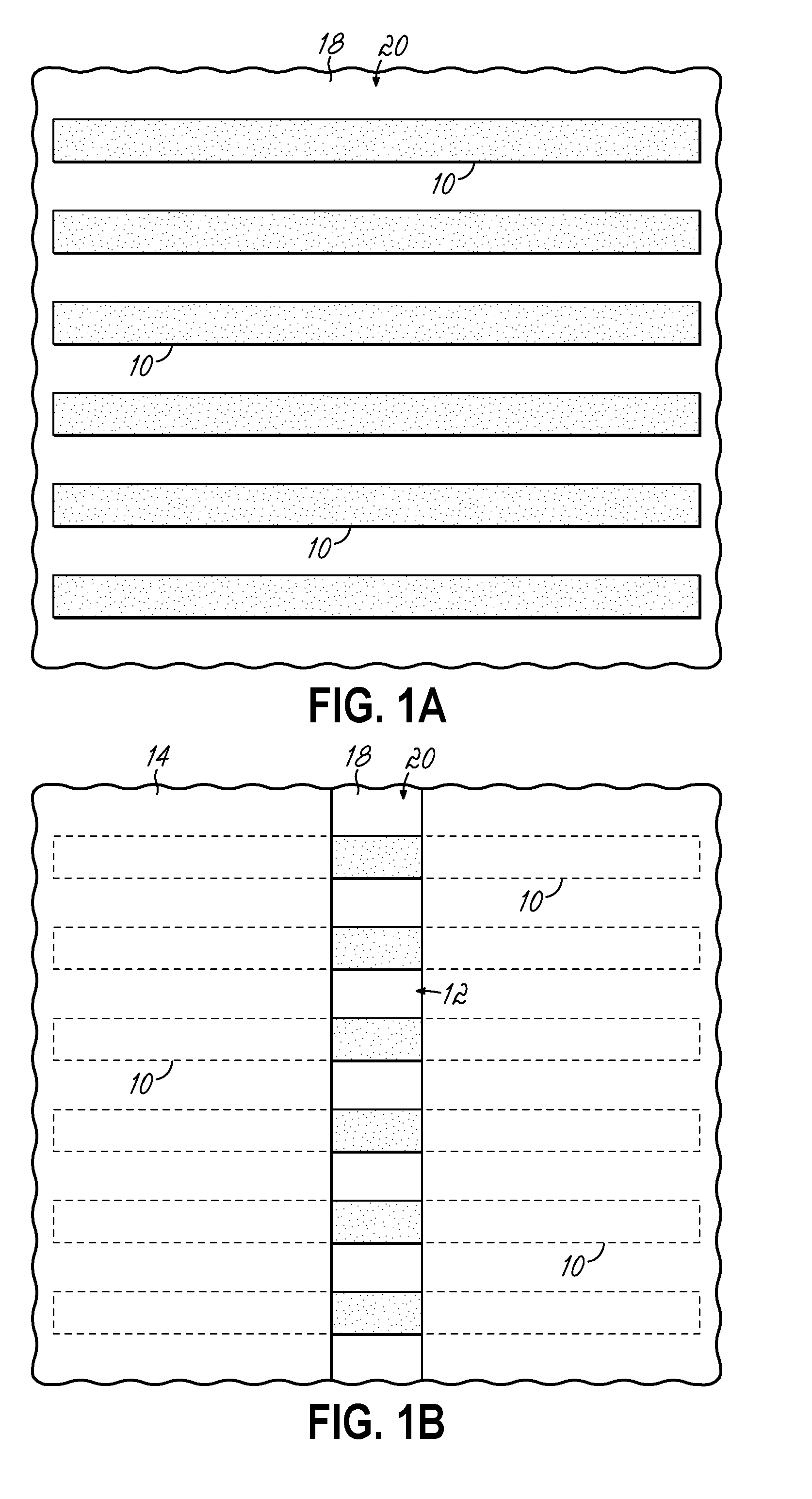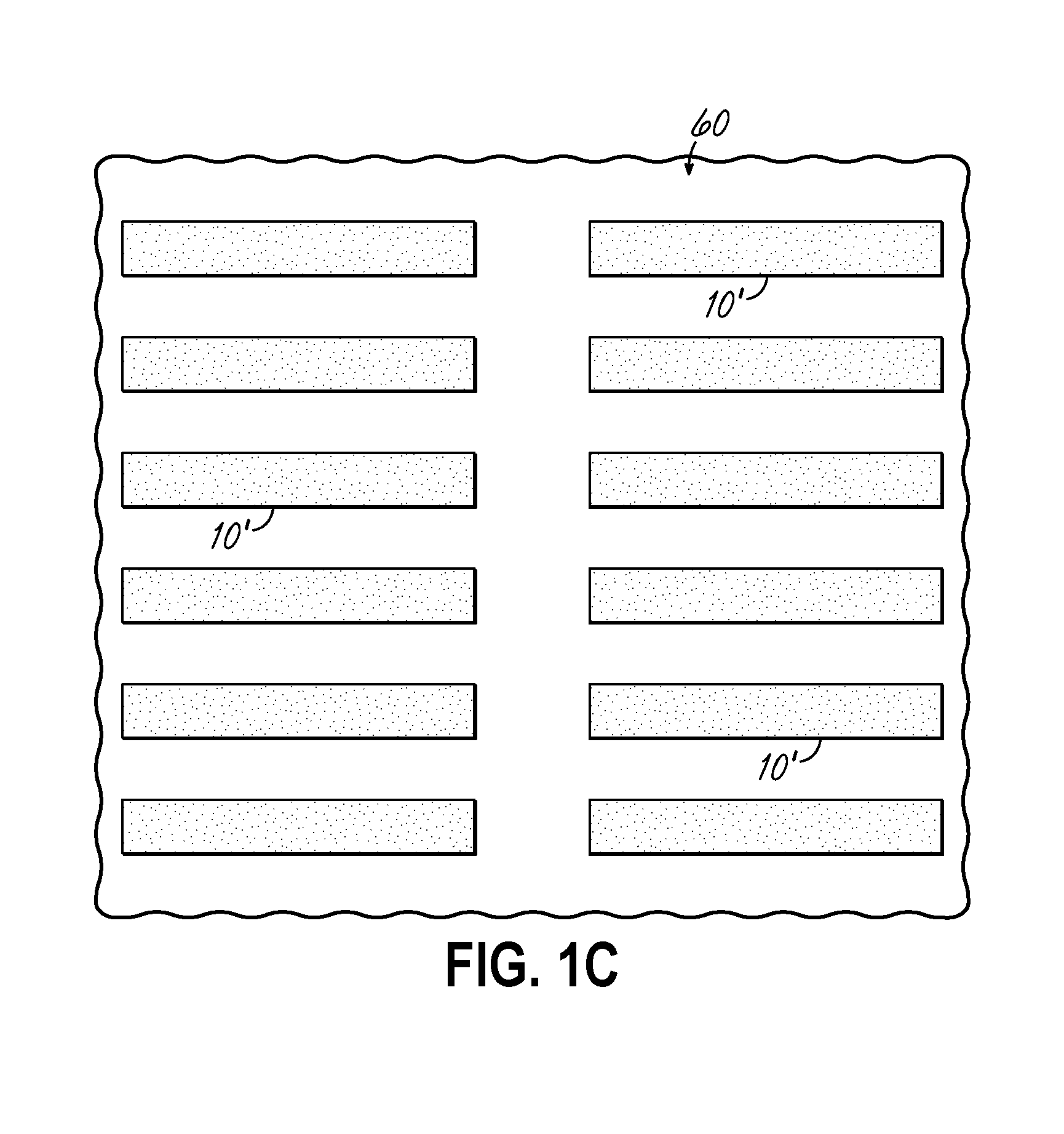Use of grapho-epitaxial directed self-assembly to precisely cut lines
a self-assembly and grapho-epitaxial technology, applied in the direction of photomechanical equipment, instruments, photosensitive material processing, etc., can solve the problem of limiting the density scaling of integrated circuit pattern density, the distance between two line ends, and the limit of what can be achieved optically
- Summary
- Abstract
- Description
- Claims
- Application Information
AI Technical Summary
Benefits of technology
Problems solved by technology
Method used
Image
Examples
Embodiment Construction
[0026]Methods of designing and using grapho-epitaxy and optionally chemo-epitaxy to drive assembly of a block copolymer for patterning line features are disclosed in various embodiments. However, one skilled in the relevant art will recognize that the various embodiments may be practiced without one or more of the specific details or with other replacement and / or additional methods, materials, or components. In other instances, well-known structures, materials, or operations are not shown or described in detail to avoid obscuring aspects of various embodiments of the present invention.
[0027]Similarly, for purposes of explanation, specific numbers, materials, and configurations are set forth in order to provide a thorough understanding. Nevertheless, the embodiments of the present invention may be practiced without specific details. Furthermore, it is understood that the illustrative representations are not necessarily drawn to scale.
[0028]Reference throughout this specification to “...
PUM
| Property | Measurement | Unit |
|---|---|---|
| Thickness | aaaaa | aaaaa |
| Width | aaaaa | aaaaa |
| Dimension | aaaaa | aaaaa |
Abstract
Description
Claims
Application Information
 Login to View More
Login to View More - R&D
- Intellectual Property
- Life Sciences
- Materials
- Tech Scout
- Unparalleled Data Quality
- Higher Quality Content
- 60% Fewer Hallucinations
Browse by: Latest US Patents, China's latest patents, Technical Efficacy Thesaurus, Application Domain, Technology Topic, Popular Technical Reports.
© 2025 PatSnap. All rights reserved.Legal|Privacy policy|Modern Slavery Act Transparency Statement|Sitemap|About US| Contact US: help@patsnap.com



